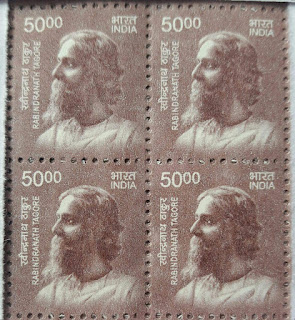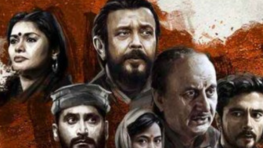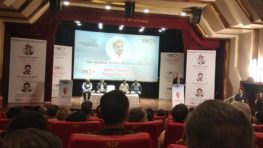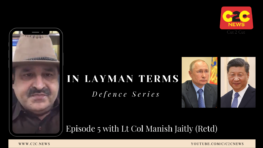
Advertising and branding, a western concept since long started becoming popular in India especially after the hugely popular AMUL hoardings with its topical one liner’s. But when it came to politics, this has been a topic not often discussed as a subject and if at all discussed, is more for the criticism of one or other political leader. A political party usually advertises to inform and sell an idea to garner votes, but they consciously try to create a brand connect – in their family name. The reason being that they will need to keep conveying different messages to different voters at different times, regions etc.
Unlike a brand that will convey some tangible benefit consistently, a political party does not have that luxury. So, what is the option? The ONLY common connect they can create is the credibility/ reputation/ trust that their name (family) evokes – a political brand.
But first, let’s analyse how our systems work and the focus is only on the political system and not the administration.
We have a central government which will be ruled by a party A and even assuming they have a majority they will be opposed by B, C, D, E in parliament on programs they want to implement. But whatever they decide, the implementation will still have to flow down to the last mile. This will mean navigating several political layers. Even if it seems like there is a hierarchy, fact is, there is no hierarchy as a political system. Even the PM and CM are considered first among equals officially. Their ability to exert their superiority is by sheer personality and personal standing with the wider voting public.
You have the Members of Parliament who represent several state assembly constituencies. This MP, even assuming is from the ruling party at the centre, will have to deal with a state government that maybe governed by a party C. Maybe out of the 5 to 7 assembly constituencies under the MP with MLA’s, one can have representatives from party A, B, C, G, H, and the MP must cajole, request and “compromise” with each MLA to get work done. Based on their personality the MLA of party H may well be a forceful and popular figure, thus requiring the MP to “listen” to him.
Based on the city/town/ villages you then have corporators, panchayat, zilla parishad and such members who form the last mile executors of government programs. Even if one may talk of some of these elections being on non-party basis, fact is, that they exist. One must live with this fact.
Theoretically, and often in reality the chain from the centre to the last mile will have to navigate 2 to 4 different political parties/ elected representatives in power and based on the dynamics played out the execution can suffer. Most importantly each person wants the credit for themselves. THAT is where political branding becomes crucial. If the branding is missing or diluted for utopian ideals the result will be a disaster, often.
To digress for a minute, when younger and idealistic I used to ask – Why should there be election campaigning at all? If a person has done good work will not the voter be aware?
Much later in life one understood the reality of the political and voter minefield. The most telling experience was during the Vajpayee govt, when his government started 2 flagship programs – The golden quadrilateral connecting 4 corners of India and the village roads scheme called Pradhan Mantri Gram Sadak Yojana. Visiting a village that came under a well-known MLA from the opposition party I found excellent roads and was really impressed. The MLA had indeed done good work. Casually chit chatting with some folks I remarked about the good roads and was taken aback at the reaction – they said that the entire credit should go to the local MLA. The MLA had conceived of this project, used the contacts of the party leaders in Delhi, ensured that even the PMO sanctioned funds and done the job. Mind you these were not some village bumpkins to claim they were being fooled. They were people generally aware of life. When I argued about there being a project under the PMO, they said that maybe the PM was also doing some such project, but their village road was the opposition MLA’s project.
This set me thinking and I ventured into general debate with the Congress eco-system to understand their thought process. That is when I started appreciating why, and how every project, institution, program, road, etc are named after just one family. It did not matter which government, which party, politician executed the project, the ground reality was that, while Congress took the credit naturally, the opposition had no chance of taking any credit. No story would fly in front of the voter once the benefit was in the name of the political brand of Congress.
Look at the subsidised food program started by Congress in Karnataka – called Indira canteen with huge pictures of Indira Gandhi everywhere. The earlier JDS govt and Mr. Kumaraswamy allocated Rs. 211 Crores for the scheme and expanded it across the state. Did not obtain any political mileage from it and instead with family/party funds had to start a few similar canteens in his family name to claim fame – unsuccessfully.
On the other hand, a drinking water scheme started by the late BJP MP Mr. Ananth Kumar had his pictures displayed at each outlet. Within days of his death – yes, literally days – the pictures were quietly removed by the Congress govt. More recently the Kamal Nath government in Madhya Pradesh renamed various programs started by the BJP government within hours after assuming office.
In 2004 even before the Manmohan Singh government took oath of office the boards across the national highways which proclaimed the name – “PM’s Golden Quadrilateral” – were torn down in one night across a 400 kms highway as personally seen by me. Friends confirmed observing this even in the Delhi region.
The feedback from those I spoke to, was that the Congress and the family name could never be separated in India and this brand, was what kept the party glued to the family. No political leader, however good, could aspire to match the brand because it takes decades to build it. But every local leader even in opposition ruled states could usurp the programs. Not easy for a local ruling party politician to claim credit for a what carries the name of the opposition in his state.
One person gave me a very interesting insight. He said that various postal stamps released in India over the decades when analysed will show that the cheapest stamps carried the picture of Rajiv, Indira, or Nehru across the decades.
The other stalwarts of India had postal stamps issued but were of higher denomination. The logic was simple. The maximum usage of stamps was in the cheapest category and every letter meant that the sender/ receiver was visually bombarded with images of the family.

That BJP and the Vajpayee government lost in 2004 is no surprise. Someone should do a study on the lack of impact of the various good programs that his government started inspite of being executed well. However small a dip stick poll – my view is that this utopian strategy to have neutral names can only cause grief in a federal set up such as India.
What all this means is that political branding is crucial especially in a federal system and that is why the present Modi government, post 2014 has rebranded every program started by the previous Congress government. Even while renaming existing projects, the names of new projects continue to stay neutral without being associated with any name. The Congress at one point even objected to using the phrase “Prime Minister” in project names, because the “office” was getting strongly associated with Modi.
That the Nehru family has created an enduring brand, by design or default or megalomania is beside the point. That it has created and grown it brilliantly over the decades deserves credit. The strategy was excellent because it meant that even their opponents sold their brand when working. It made their job that much easier while making the opponents job harder.
The REAL challenge is that in a changing world the Nehru family brand is taking a beating in recent times because they are running out of brands. Congress had Nehru, Indira and then Rajiv, which was 3 decades ago, as brands. Post that the family brand custodians have failed to create a new brand for the future. No programs, schemes or institutions bear the name of either Sonia or Rahul and notwithstanding whatever political success they may have had, their brand has ceased to carry weight. This explains the power struggle within the party even as it demands that the family start “working”. This explains why non-BJP opposition is snapping at their heels. Their brand is losing sheen and that means each will have to work 10 times harder to gain credence with voters.
Recall that 20~30 years back brands like IBM, AT & T, Disney, Motorola, and Nokia ruled the world and today many have disappeared. The family needs to understand that with time the voter will lose connect with old names and unless they reinvent themselves and reposition their brand in a new avatar, zing, and excitement their heirloom value will soon be lost.
Today, Modi like in many other aspects has usurped the strategy and tactics of the Congress and Nehru/Gandhi family. He has upended them by rebranding all older programs and then running with them to the finish line. In the case of new programs, he has consciously avoided creating the Modi brand by not naming projects after himself, since the party abhors personal ownership of party. But the usage of his pictures tells a different story. In today’s politics this branding is crucial and like in many other cases Modi has changed the rules of the game to ensure that he and the BJP don’t get ambushed by opposition. Modi may well have created the next generation Indian election campaigning strategy – like in the USA where the party sells a leader as a brand and hopes to win the election.
Tomorrow, post Modi, any BJP leader will have little choice but to follow the same path of promoting themselves to ensure that their, and the party work doesn’t get ambushed. This is also the reason why in India every political party is a family party because they realise, THAT is the only way to create and build a long-lasting brand, so badly needed in a fragmented, federal political system like what India has.
In the Congress, even a non-family leader thinks their job is easy. They truly believe that they have an enduring political brand that can be used easily with little effort. But reality is that newer generations of the family brand is missing and what is being presented is old which has lost connect with current generations. The current brand custodians show lack of cohesion and attract derision even amongst hard core supporters.
That political branding was a long-accepted practise and needed seems lost to many of us. Today it is just our pique that suddenly we find fault with this strategy without realising that in an era where fastest finger first rules, public memory is as short as the last tweet or Instagram post any political leader if they want to succeed, needs to not just work, perform, show results but create, nurture, and promote their brand.
Let us not scoff at this because if each of us were to be pitchforked into a position of power and we implemented our utopian ideal of NOT promoting oneself calling it megalomania, we can deliver growth, development, success and in the end lose the next elections. Never forget Vajpayee and his cardinal sin of not creating a brand for himself or BJP.
https://network9.biz/how-political-branding-can-win-or-lose-an-election/

Author: Ravindra Vasisht can be reached on Twitter: @rvasisht
Credit: Republished with permission from author
Source: https://rvasisht.blogspot.com/2021/08/political-branding.html





